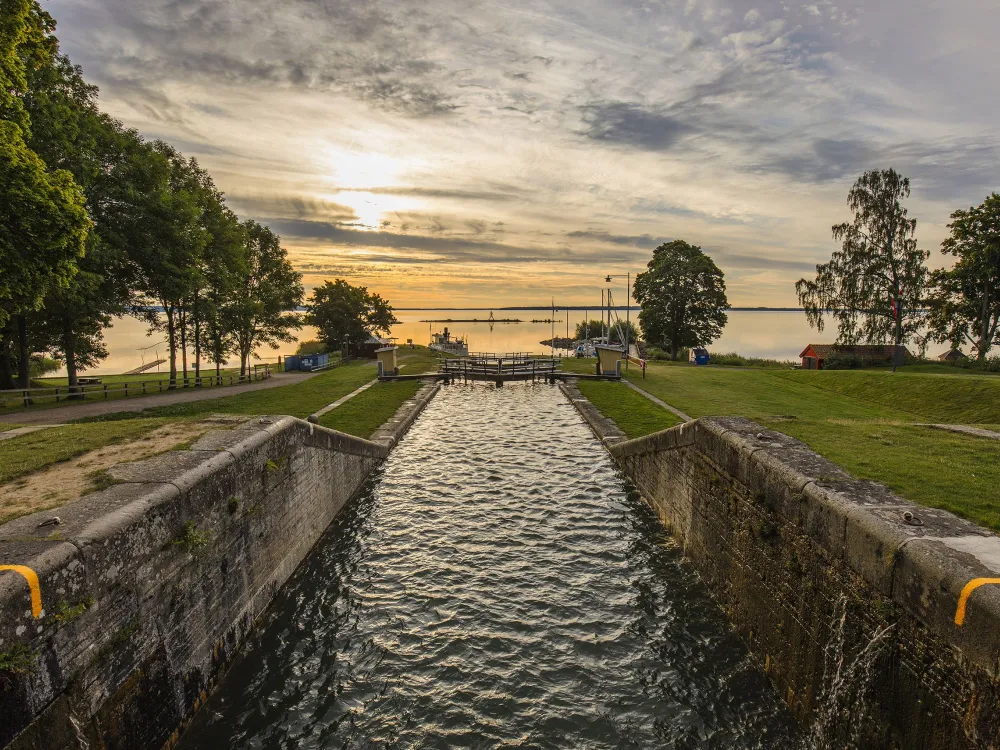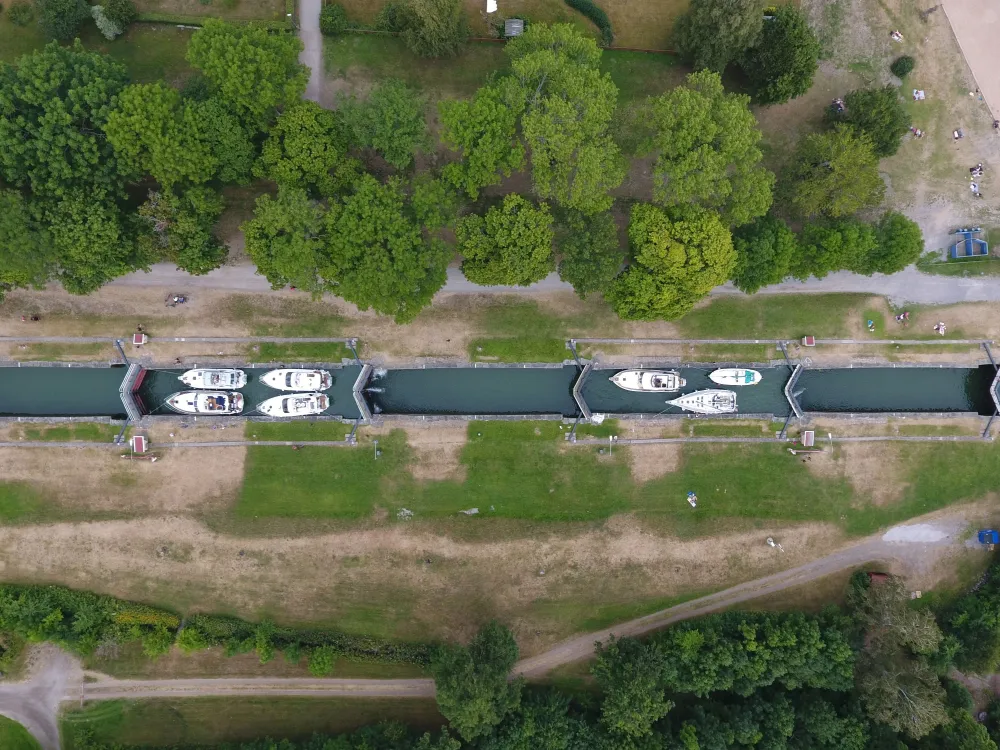The Carl Johan Flight of Locks
Read about the Carl Johan Flight of Locks 's formal name, year of construction and technical facts. Learn the history!
Product description
Formal name: Carl Johan (King Charles XIV John and his son, Prince Oscar, visited the flight of locks during their construction. He laid two foundation stones, which is why the locks carry his name).
Year of construction: 1815-1818
Technical facts: These seven connected locks form the longest flight of locks on the canal. They cover a rise of 18.8 metres between Lake Roxen and the Berg guest harbour. They use hydraulic manoeuvering. There are a total of eleven locks at Berg, all constructed using limestone from the Berg quarry.
The founder of the Göta Canal, Baltzar von Platen, had initially planned for all the lock gates on the canal to be made of oak. This idea, however, would have been immensely expensive, which is why he chose to follow the British example instead and use cast iron for the frames. In the 1980’s and 90’s, many of the lock gates were replaced with new, continuously welded steel gates. However, in the mid-1990’s, the Board of Directors of the canal company decided to restore the gates to their original condition, as far as possible. That is why today, most of the gates have their original cast iron frames, dating back to when the canal was first built, and the wood in them has a lifespan of about 35-40 years. When lock gates are replaced today, they are made out of cast iron rather than steel, so as to preserve the historical authenticity of the canal.
The lower parts of the lock gates have two hatches through which the water flows. Initially, each gate only had one hatch, but in the early 1900’s they were fitted with double hatches to shorten locking times. The upper bar on the lock gate is the so called boom bar’, where the manoeuvering devices are connected to the lock gates. Back when they were still manually operated, lock housings with gears and wheels or wrenches were used to open the gates. Today, hydraulic pistons which open and close the gates are mounted on the boom bar.
The lock keeper’s house adjacent to the Carl Johan flight of locks was built at some point between 1810 and 1820. The house originally had two apartments, for two keepers and their families. About 100 metres south of the locks lies the former lock inspector’s house.

